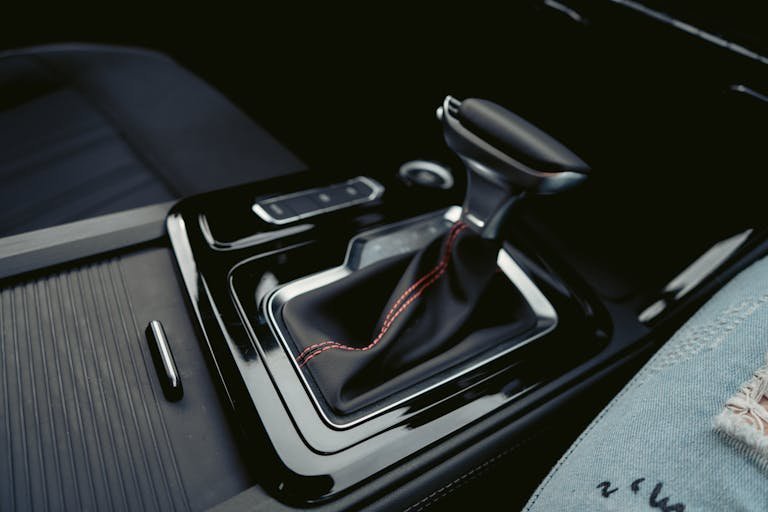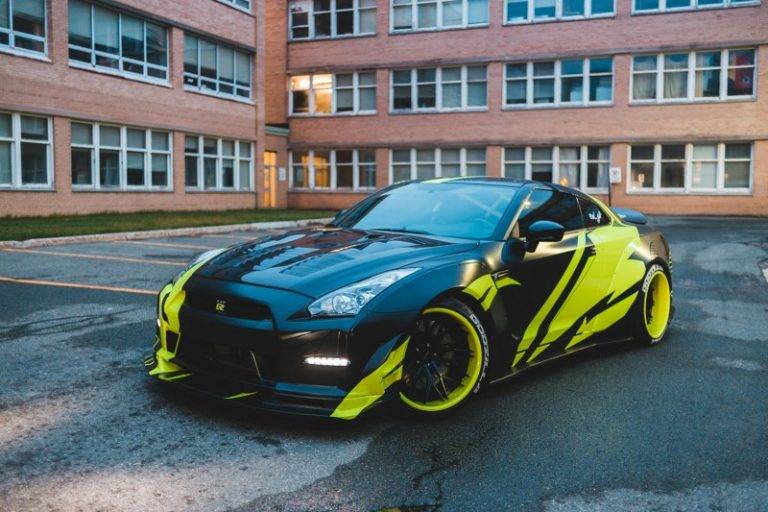Pulsar 150 Front Disc Brake Kit Price

The Pulsar 150 front disc brake kit price can vary significantly, ranging from approximately $50 to $200 depending on the brand, quality, and whether you’re buying a complete kit or individual components.
Key Takeaways
Research Pulsar 150 front disc brake kit prices online and locally.
Compare genuine Bajaj parts versus aftermarket options.
Factor in installation costs if you’re not doing it yourself.
Consider the condition of your existing brake system.
Prioritize safety and performance when choosing a kit.
Owning a Bajaj Pulsar 150 is a fantastic experience, offering a blend of performance and affordability. As you ride, maintaining your braking system is paramount for safety and confidence. One common upgrade or replacement is the front disc brake kit. You might be wondering about the Pulsar 150 front disc brake kit price, especially if you’re looking to enhance your bike’s stopping power or replace worn components. This guide will demystify the costs involved and help you make an informed decision, whether you’re a seasoned rider or new to motorcycle maintenance. Let’s dive into what influences the price and what you can expect to pay.
Understanding the Pulsar 150 Front Disc Brake System
Before we explore the Pulsar 150 front disc brake kit price, let’s briefly understand what makes up this crucial safety component. A front disc brake system typically includes several key parts:
Brake Caliper: This component houses the brake pads and uses hydraulic pressure to squeeze them against the rotor.
Brake Rotor (Disc): A spinning metal disc attached to the wheel hub. The caliper applies pressure to this rotor to slow the wheel.
Brake Pads: Friction material that presses against the rotor. These wear down over time and need regular replacement.
Brake Master Cylinder: Located at the handlebar, this converts the lever’s force into hydraulic pressure.
Brake Lever: The part you pull to engage the brakes.
Brake Lines (Hoses): Carry the brake fluid from the master cylinder to the caliper.
Brake Fluid: The hydraulic fluid that transmits pressure.
When people refer to a “brake kit,” they often mean a set of replacement parts, typically including brake pads, and sometimes a new rotor, or even a complete upgrade package. For the Pulsar 150, the exact components included in a “kit” can vary by manufacturer.
Factors Influencing Pulsar 150 Front Disc Brake Kit Price
The cost of a Pulsar 150 front disc brake kit isn’t a single, fixed number. Several factors come into play, affecting the final price you’ll see at your local shop or online:
Brand Reputation and Quality: Just like with any automotive part, brands known for high performance and durability often come with a higher price tag. Genuine Bajaj parts are usually made to strict specifications but can be more expensive than aftermarket alternatives. Reputable aftermarket brands offer a balance of quality and value.
Material and Technology: The type of materials used for the brake pads (e.g., organic, semi-metallic, ceramic) and the rotor (e.g., standard stainless steel, slotted, drilled) can impact cost. High-performance or specialized materials will naturally command a higher price.
Completeness of the Kit: A kit might just include brake pads, while others offer a more comprehensive package with pads, a rotor, and sometimes even new brake lines or fluid. The more parts included, the higher the overall price.
Origin of Manufacture: Parts manufactured in different countries or by different factories can have varying costs due to labor, materials, and import duties.
Retailer and Location: Prices can differ between online stores, authorized Bajaj dealerships, and independent motorcycle repair shops. Your geographic location in the USA can also play a role due to shipping costs and local market demand.
Timing and Promotions: Sales, discounts, and special offers can temporarily lower the Pulsar 150 front disc brake kit price.
Aftermarket vs. Genuine Parts: Genuine Bajaj parts ensure perfect fit and performance as intended by the manufacturer. Aftermarket parts can offer significant savings and sometimes even improved performance, but quality can vary widely.
Average Pulsar 150 Front Disc Brake Kit Price Range
Considering the factors above, here’s a general breakdown of what you might expect to pay for a Pulsar 150 front disc brake kit in the USA:
Brake Pad Sets (Front)
Genuine Bajaj: $15 – $35
Reputable Aftermarket (e.g., EBC, Brembo, Vesrah): $20 – $50
Brake Rotor (Front Disc)
Genuine Bajaj: $40 – $70
Reputable Aftermarket: $35 – $60
Complete Front Disc Brake Kit (Pads + Rotor)
Basic Aftermarket: $50 – $80
Higher-Quality Aftermarket: $70 – $150
Genuine Bajaj (if available as a combined kit): $90 – $180+
It’s important to note that these are estimates. Prices can fluctuate based on the specific model year of your Pulsar 150, as some components might have minor differences.
Where to Buy Your Pulsar 150 Front Disc Brake Kit
Finding the right place to purchase your brake kit is as important as selecting the right kit itself. Here are some common options:
Authorized Bajaj Dealerships: These are your go-to for genuine parts. They offer the assurance of quality and fit but might be the most expensive option.
Online Motorcycle Parts Retailers: Websites like RevZilla, Cycle Gear, Amazon, eBay, and specialized Bajaj parts dealers offer a wide selection of both genuine and aftermarket parts. You can often find competitive pricing and read customer reviews.
Local Independent Motorcycle Repair Shops: Many shops carry common brake parts or can order them for you. They can also offer expert advice and installation services.
When ordering online, always double-check the part numbers to ensure compatibility with your specific Pulsar 150 model year.
Choosing Between Genuine and Aftermarket Parts
This is often the biggest decision when looking at the Pulsar 150 front disc brake kit price.
Genuine Bajaj Parts
Pros:
Guaranteed perfect fit and compatibility.
Designed to meet Bajaj’s original performance and safety standards.
Often come with a warranty.
Cons:
Typically more expensive.
Limited availability from third-party retailers.
Aftermarket Parts
Pros:
Wider variety of options, including performance upgrades.
Often more affordable than genuine parts.
Brands like EBC, Brembo, and Vesrah are known for quality and performance.
Cons:
Quality can vary significantly between brands.
Fitment issues can sometimes occur if not carefully selected.
Warranty policies differ greatly by brand.
For essential safety components like brakes, opting for well-regarded aftermarket brands (like those mentioned above) is generally a safe and cost-effective choice. Always research the specific aftermarket brand before purchasing.
Installation: DIY vs. Professional Help
The Pulsar 150 front disc brake kit price doesn’t end with the purchase of the parts. You also need to consider installation costs if you’re not performing the work yourself.
DIY Installation
Cost: Primarily the cost of the parts and any necessary tools.
Pros: Saves money, provides a sense of accomplishment, and you learn more about your motorcycle.
Cons: Requires basic mechanical knowledge, proper tools, and the ability to follow instructions carefully. Mistakes can be costly and dangerous.
Tools You Might Need: Socket set, wrenches, torque wrench, caliper piston tool, brake bleeder kit, fluid catch pan, shop rags.
Professional Installation
Cost: Varies by shop and labor rates. Expect to pay anywhere from $50 to $150 for front brake pad replacement or a full disc replacement, depending on your location and the complexity.
Pros: Done by experienced technicians, ensuring safety and proper function. Saves you time and potential frustration.
Cons: Adds to the overall expense.
If you’re new to motorcycle maintenance, having a professional install your first brake kit is a good idea to ensure it’s done correctly. Many reputable shops, including those certified by organizations like the Motorcycle Industry Council (MIC), can perform this service.
When to Replace Your Front Disc Brake Components
Regular maintenance is key. Here are signs that indicate it’s time to consider a Pulsar 150 front disc brake kit:
Spongy or Soft Brake Lever: This is a classic sign of air in the brake lines or a leak.
Screeching or Grinding Noises: Indicates worn brake pads or a damaged rotor.
Reduced Braking Performance: If your bike isn’t stopping as quickly as it used to.
Brake Lever Pulled All the Way to the Handlebar: Your pads are severely worn.
Visible Wear on Pads or Rotor: Check the thickness of the pads and look for deep grooves or warping on the rotor. Most brake pads have a wear indicator groove.
A good rule of thumb is to inspect your brakes every few thousand miles (e.g., 5,000 miles) or at least once a year. The National Highway Traffic Safety Administration (NHTSA) provides extensive resources on vehicle safety components, underscoring the importance of well-maintained brakes.
Common Pulsar 150 Front Disc Brake Kit Options and Prices
Let’s look at some hypothetical examples of what you might find when searching for a Pulsar 150 front disc brake kit. Remember, these prices are illustrative.
Example Scenario 1: Basic Replacement
You need to replace just your worn front brake pads.
Part: Aftermarket Organic Brake Pads
Brand: A reliable, mid-tier brand
Estimated Price: $25 – $35
Example Scenario 2: Enhanced Performance
You want to upgrade both your front brake pads and the rotor for better stopping power.
Parts:
Semi-metallic or ceramic brake pads (aftermarket)
Performance aftermarket front brake rotor
Brands: Reputable performance brands (e.g., EBC, Galfer)
Estimated Price: $100 – $180
Example Scenario 3: Genuine Parts Replacement
You want to ensure you’re using only genuine Bajaj parts for peace of mind.
Parts:
Genuine Bajaj front brake pads
Genuine Bajaj front brake rotor
Estimated Price: $90 – $150 (for both components)
Table: Price Comparison of Pulsar 150 Front Disc Brake Components
| Component | Genuine Bajaj (Est. Price) | Reputable Aftermarket (Est. Price) |
| :—————— | :————————- | :——————————— |
| Front Brake Pads | $20 – $35 | $20 – $50 |
| Front Brake Rotor | $40 – $70 | $35 – $60 |
| Complete Kit (Pads + Rotor) | $90 – $180+ | $50 – $150 |
| Installation Labor | $50 – $150 | $50 – $150 |
Note: Prices are estimates and can vary based on retailer, location, and specific product.
Pro Tips for Maintaining Your Pulsar 150 Brakes
Check Brake Fluid Regularly: Ensure the brake fluid level is between the minimum and maximum marks. Replace brake fluid every two years, as it absorbs moisture over time, reducing its effectiveness. The U.S. Department of Transportation (DOT) specifies standards for brake fluid.
Clean Brake Components: Periodically clean your brake caliper and rotor to remove dirt and debris that can affect performance.
Break-in New Pads and Rotors: Follow the manufacturer’s recommendations for breaking in new brake components. This typically involves a series of moderate stops to allow the pad material to bed in properly.
Inspect Brake Lines: Look for any signs of cracking, chafing, or leaks in the brake lines. Damaged lines should be replaced immediately.
Frequently Asked Questions About Pulsar 150 Front Disc Brake Kits
Q1: How often should I replace my Pulsar 150 front brake pads?
A: Brake pads typically need replacement every 10,000 to 15,000 miles, but this can vary greatly depending on your riding style, the type of pads, and road conditions. Always inspect them visually for wear.
Q2: Can I use a brake kit for a different Pulsar model on my Pulsar 150?
A: It’s generally not recommended. While some models might share parts, it’s best to confirm compatibility with your specific Pulsar 150 year and variant to ensure a precise fit and optimal performance. Always check part numbers.
Q3: What’s the difference between organic, semi-metallic, and ceramic brake pads?
A:
Organic: Softer, quieter, less heat resistant, wear faster. Good for casual riding.
Semi-metallic: Balanced performance, good stopping power, more durable than organic, can be noisy and wear rotors faster.
* Ceramic: Quiet, low dust, good stopping power across a range of temperatures, generally longer lasting, and gentler on rotors.
Q4: Is it cheaper to buy a complete brake kit or individual parts?
A: Often, a complete kit can offer a slight cost saving compared to buying each component separately, especially for aftermarket options. However, if you only need to replace one component, buying individually is more economical.
Q5: What does “bedding in” brake pads mean?
A: Bedding in is a process of applying the new brake pads and rotor together to create an even transfer of friction material. This improves braking performance and longevity. Follow the manufacturer’s specific instructions.
Q6: Are all Pulsar 150 models equipped with front disc brakes?
A: Most modern Pulsar 150 variants come standard with a front disc brake. However, some older or specific base models might have offered a drum brake option for the front. It’s essential to confirm your bike’s current configuration.
Q7: Where can I find reliable reviews for aftermarket Pulsar 150 front disc brake kits?
A: Look for reviews on major online motorcycle parts retailers, dedicated motorcycle forums, and YouTube channels that feature motorcycle maintenance and reviews. User feedback can be invaluable.
Conclusion
Understanding the Pulsar 150 front disc brake kit price involves looking beyond just the sticker shock. By considering the brand, quality, components included, and your installation preference, you can find a solution that fits your needs and budget. Whether you opt for genuine Bajaj parts or a high-quality aftermarket kit, prioritizing the safety and performance of your braking system is always the best investment you can make on your motorcycle journey. With the right knowledge and a little research, you can confidently maintain your Pulsar 150’s stopping power for miles of enjoyable riding ahead.






